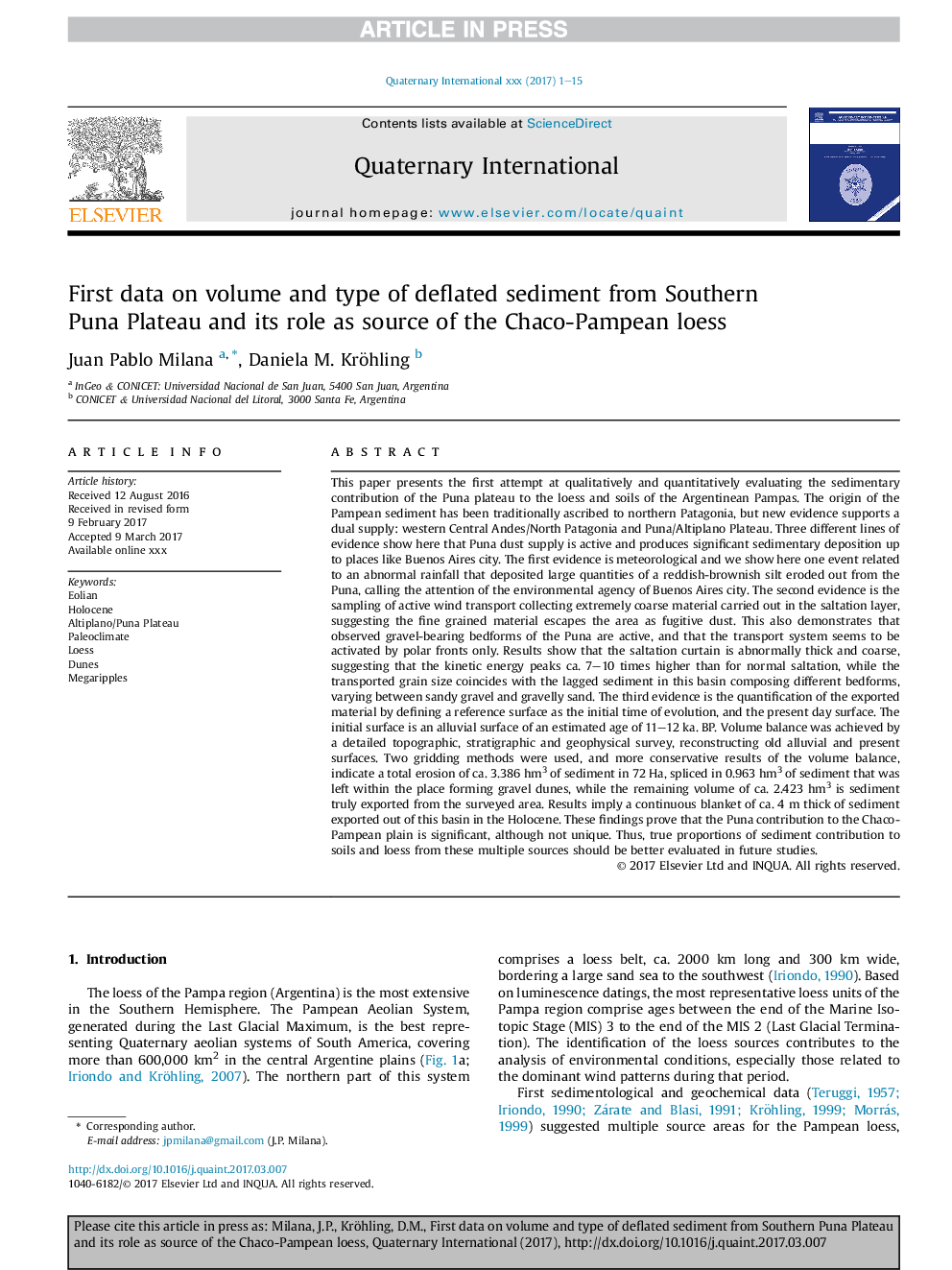| کد مقاله | کد نشریه | سال انتشار | مقاله انگلیسی | نسخه تمام متن |
|---|---|---|---|---|
| 5113515 | 1377936 | 2017 | 15 صفحه PDF | دانلود رایگان |
عنوان انگلیسی مقاله ISI
First data on volume and type of deflated sediment from Southern Puna Plateau and its role as source of the Chaco-Pampean loess
ترجمه فارسی عنوان
داده های اولیه در مورد حجم و نوع رسوب غلیظ شده از پلاتو جنوبی پونه و نقش آن به عنوان منبع چاکو پامپین لوز
دانلود مقاله + سفارش ترجمه
دانلود مقاله ISI انگلیسی
رایگان برای ایرانیان
کلمات کلیدی
موضوعات مرتبط
مهندسی و علوم پایه
علوم زمین و سیارات
زمین شناسی
چکیده انگلیسی
This paper presents the first attempt at qualitatively and quantitatively evaluating the sedimentary contribution of the Puna plateau to the loess and soils of the Argentinean Pampas. The origin of the Pampean sediment has been traditionally ascribed to northern Patagonia, but new evidence supports a dual supply: western Central Andes/North Patagonia and Puna/Altiplano Plateau. Three different lines of evidence show here that Puna dust supply is active and produces significant sedimentary deposition up to places like Buenos Aires city. The first evidence is meteorological and we show here one event related to an abnormal rainfall that deposited large quantities of a reddish-brownish silt eroded out from the Puna, calling the attention of the environmental agency of Buenos Aires city. The second evidence is the sampling of active wind transport collecting extremely coarse material carried out in the saltation layer, suggesting the fine grained material escapes the area as fugitive dust. This also demonstrates that observed gravel-bearing bedforms of the Puna are active, and that the transport system seems to be activated by polar fronts only. Results show that the saltation curtain is abnormally thick and coarse, suggesting that the kinetic energy peaks ca. 7-10 times higher than for normal saltation, while the transported grain size coincides with the lagged sediment in this basin composing different bedforms, varying between sandy gravel and gravelly sand. The third evidence is the quantification of the exported material by defining a reference surface as the initial time of evolution, and the present day surface. The initial surface is an alluvial surface of an estimated age of 11-12 ka. BP. Volume balance was achieved by a detailed topographic, stratigraphic and geophysical survey, reconstructing old alluvial and present surfaces. Two gridding methods were used, and more conservative results of the volume balance, indicate a total erosion of ca. 3.386Â hm3 of sediment in 72 Ha, spliced in 0.963Â hm3 of sediment that was left within the place forming gravel dunes, while the remaining volume of ca. 2.423Â hm3 is sediment truly exported from the surveyed area. Results imply a continuous blanket of ca. 4 m thick of sediment exported out of this basin in the Holocene. These findings prove that the Puna contribution to the Chaco-Pampean plain is significant, although not unique. Thus, true proportions of sediment contribution to soils and loess from these multiple sources should be better evaluated in future studies.
ناشر
Database: Elsevier - ScienceDirect (ساینس دایرکت)
Journal: Quaternary International - Volume 438, Part A, 5 May 2017, Pages 126-140
Journal: Quaternary International - Volume 438, Part A, 5 May 2017, Pages 126-140
نویسندگان
Juan Pablo Milana, Daniela M. Kröhling,
